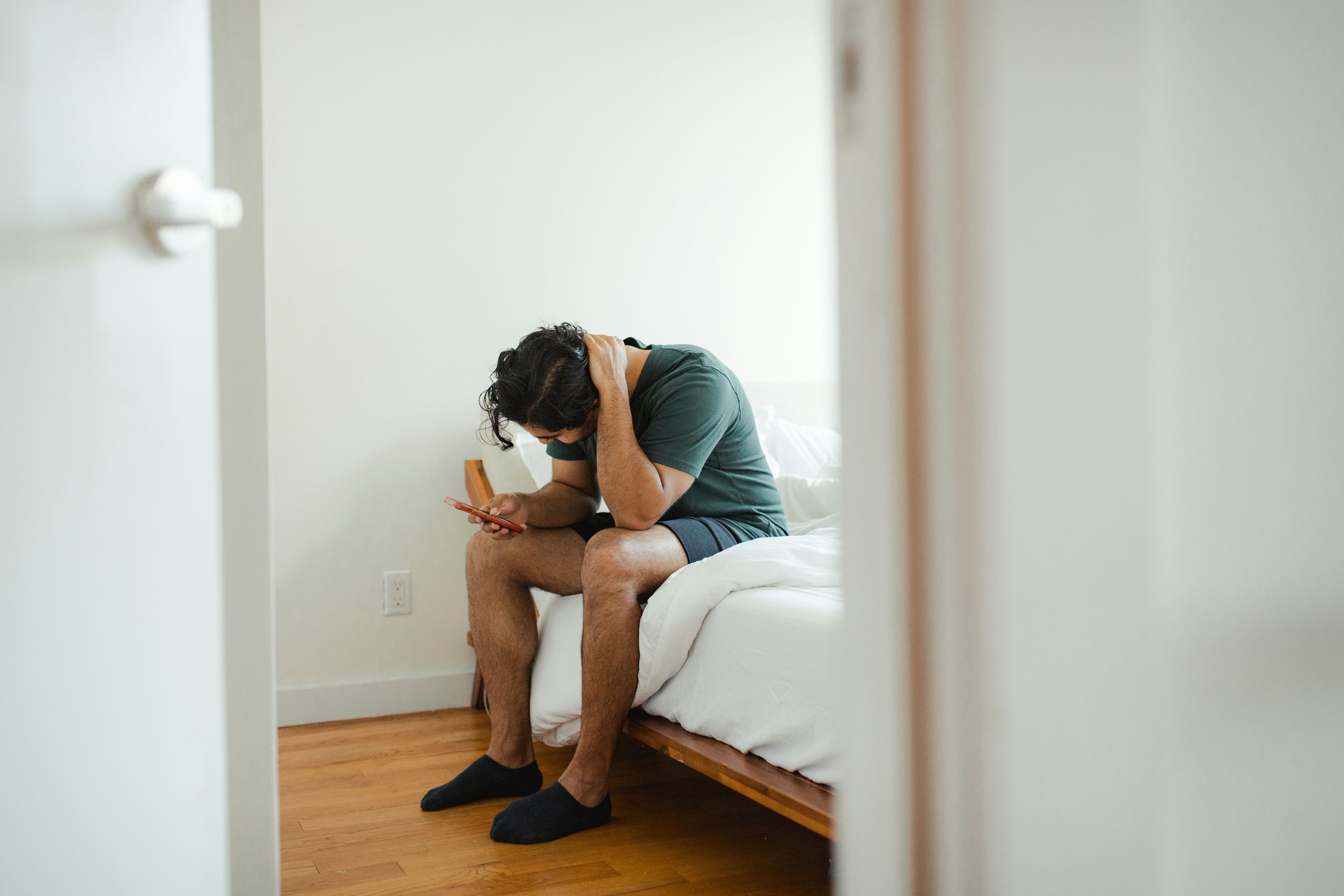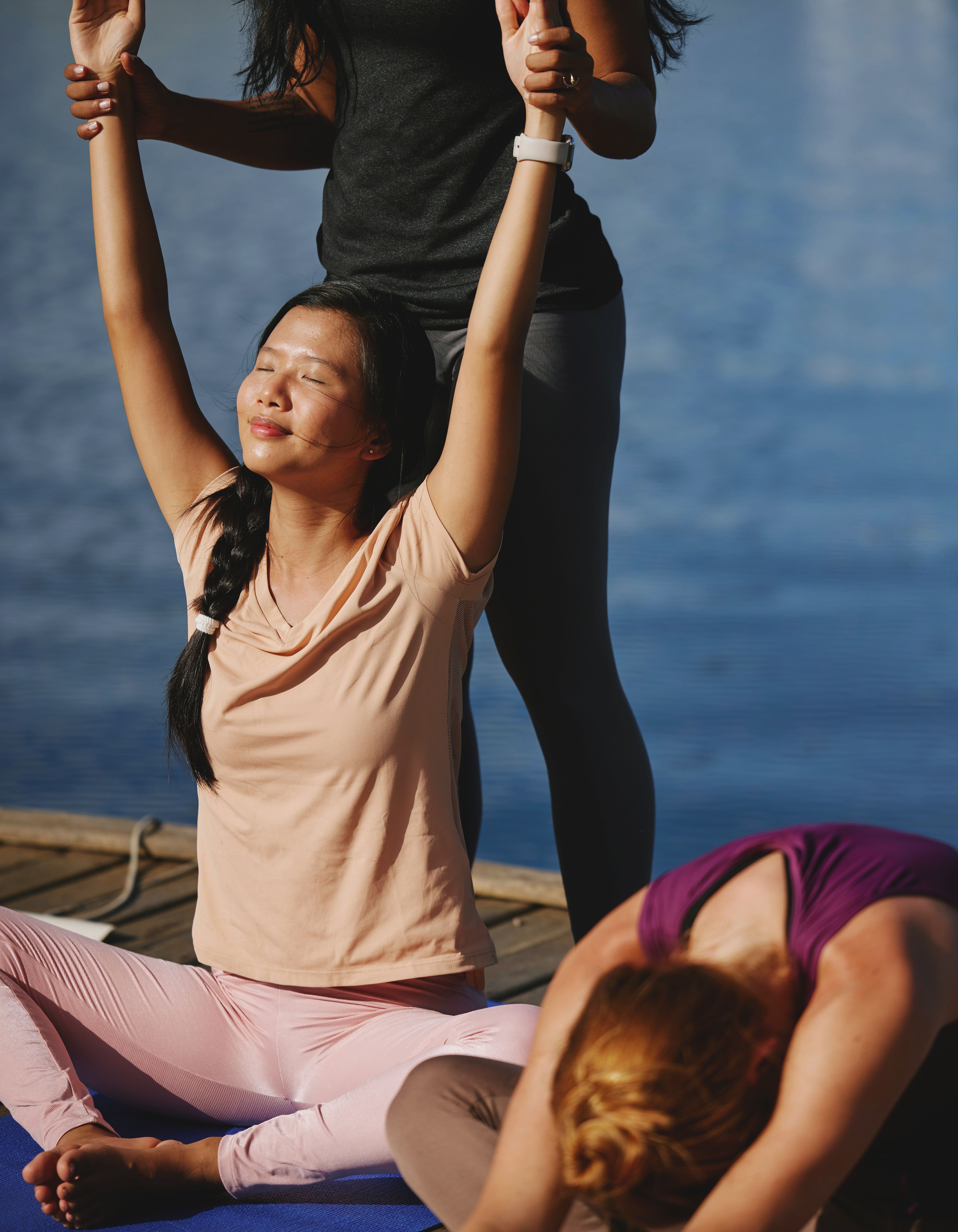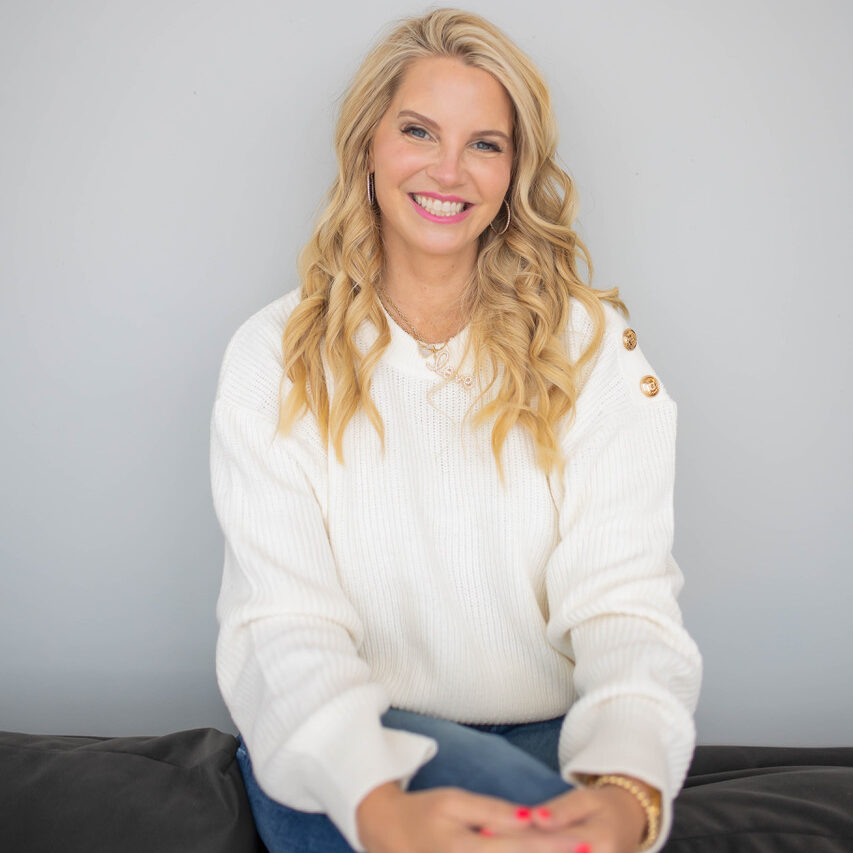My Background, Personal and Professional
I’m Rena Shoshana Forester. A Teacher, Healer, & Mentor. My healing and recovery journey includes Depression, disordered eating, Poly Cystic Ovarian Syndrome (PCOS), divorce, and Post Traumatic Stress Disorder (PTSD). Today we’re going to focus on depression.
I watched my Grandma suffer from depression for my entire childhood and find no relief in the medication she regularly took. So when I understood that I was suffering from depression, I did not believe taking antidepressants would magically make me feel better, certainly not sustainably.
One of the reasons that I became a Yoga teacher is because I understood that Yoga is a scientific method that has the potential for profound healing, including relief from depression.
The Issue or Challenge at Hand: Learning to Turn Towards Discomfort
First and foremost, it’s important for me to validate any tools and resources that you, your clients, or your family members may use to cope with depression. My intent with this piece is just to make it clear that Yoga can be a part of one’s toolbox for coping with and healing from depression.
Far too many people turn away from discomfort when it arises. I used to do the same. I’ve learned that discomfort generally arises to teach us something, and leaves once we’ve learned the corresponding lesson. In order to go through this learning process, one must first develop the capacity for holding discomfort; in other words: one must learn to turn towards discomfort rather than turning away from it.
Oftentimes, depression arises as an indicator that certain needs are not being met. Turning towards depression invites an opportunity for listening to what the body is asking for and finding ways to sustainably meet the need.
My Experience Tackling Depression
Before I was a Yoga teacher, I was a school teacher. I saw students, colleagues, parents of students, and myself experience depression on a regular basis. In my personal life, I saw multiple family members—not only my Grandma who I previously mentioned—suffer from depression. I basically saw people do one of two things when depression surfaced: either take medication as a way to carry on with day-to-day living, or hopelessly accept that their depression as is.
Neither of those options appealed to me.
I initially sought out meditation, in 2015, as a way for coping with my own depression, inspired by my father. I believed this would be a sustainable approach, but was a bit disheartened by the fact that it might take a number of years before I’d see the results of my efforts. Nevertheless, I committed to regular meditation and am glad I stuck it out to reap the benefits.
Before I found Yoga, I was a competitive swimmer; I’ve always found pleasure and relief from regular physical activity. But in 2015 I took a break from swimming and found my way to a Yoga class.
Was it a coincidence or a strike of fate that I found meditation and Yoga in the same year? Who knows. What matters is that I intuitively understood that there was a connection between the two. I kept up with both practices for about a year and a half before being introduced to The Yoga Sutras of Patanjali.
When I first began reading this foundational book on Yogic philosophy, I was blown away that it had taken me over 25 years to access this information. I started to understand that Yogic postures and meditation were two parts of the same system intended to relieve humans from internal sufferings.
I was working as a classroom teacher at the time, yet felt a strong passion to teach the science of Yoga, as opposed to the science of plants, basic math, and other general education topics I was teaching.
Not a year later, I found myself at an Ashram in India deep diving into the science of Yoga, and committing to becoming a certified Yoga teacher.
Now, nearly 7.5 years later, I can confidently say that the entire scientific method of Yoga, which includes meditation, can reduce symptoms of depression, when practiced regularly, in earnest.
There are a number of specific Yogic postures, exercises, and techniques that supported me in addressing depression, and they may just work for you, too!
Before I get to that, the way that one relates both to one’s depression and to the practice of Yoga are no less important than the tools themselves. In other words, the “how” is just as important as the “what.” One must first and foremost cultivate acceptance and compassion for one’s experience of depression, and simultaneously have a sincere openness to the potential power of Yoga. This acceptance, compassion, and openness are fundamental, and no relief will come if this subtle yet significant component is skipped.
One more note before we dive into the postures: the postures and exercises that I’ve included in this post are intended to be restorative. While they may be uncomfortable, especially if they are new for you, there should be no pain. The following three warning signs are indicators that you ought to come out of the pose, and take a moment to rest in whatever position is most comfortable for you:
- Strained breathing
- Sharp pain
- Numb tingling
Aside from these three warning signs, all other sensations are welcome, and a part of the process of letting go, in order to make space for fresh and new energy to enter your body.
Now let’s get into some of the specific postures, exercises, and techniques, written in the order that is recommended for practicing.
Balasana – Child’s Pose
Setting up for the pose: Start in a table tip position with your hands on the ground under your shoulders and your knees on the ground under your hips. Then, bring your big toes to touch and open your knees out wide. Draw your pelvis back towards your feet. If you’re able to, let your pelvis rest on your feet. If you need some support, place pillows or folded blankets/towels in the creases of your knees, so that your pelvis can have something to rest on. Extend your arms out in front. Feel free to place pillows or folded blankets anywhere else where you need to bring the ground up to you like under your forehead or below your hands. You may not need support and that’s fine too. Once you’re in the posture, hold for a minimum of 30 seconds, or up to five minutes. When you’re ready to come out, gently walk your hands towards your body and straighten your spine back up towards the sky. Pause for a moment to feel the effects of the posture.
How it supports depression healing: Balasana (Child’s Pose) is a very nurturing posture. Simply by holding the pose, one can access feelings of safety, protection, and nourishment, this alone can relax the mind and offer relief for symptoms of depression. Additionally, nowadays there’s a lot of research proving the connection between our mind and our gut. Improving gut functioning can also reduce symptoms of depression. While people often speak about nutrition as a way to heal the gut, Balasana is another way to improve gut functioning because it compresses the abdominal muscles and offers a sort of massage to the internal organs.
Prassrita Sukhasana – Seated Twist
Setting up for the pose: Start seated in a comfortable posture, which could mean with your knees crossed, or kneeling, or even on a chair. Engage your core by pulling your belly in towards your spine and up towards your chin while simultaneously feeling both sides and the back of your torso elongate up. Check that your shoulders are relaxed, the front of your chest is broad, ears are over your shoulders, and chin is parallel to the ground. On an inhale, once again feel into the length of your torso and spine and then continue feeling into that length as you stretch your arms up to the sky, with the palms facing each other. As you exhale, turn your body towards the right, placing your right hand close to your spine behind you and your left hand on your right knee. Take another inhale and feel the right hand supporting your spine and straightening up just a bit more. On the exhale, twist from your lower belly first, then your middle belly, next your chest, and finally your neck twists last. Once you’re in the posture, hold for a minimum of 30 seconds, or up to five minutes. With every inhale, use the back hand to support the spine in stretching up. With every exhale, use the front hand to twist a little deeper, always starting the twist from the lower belly, working up into the chest, and twisting the neck last. When you feel complete, on an inhale, engage the muscles in your core and twist your body back through the center. As you exhale, twist your body to the left, now bringing the left hand close to the spine behind you and your right hand on your left knee. Continuing on this side just as you did the prior, holding for roughly the same amount of time. Remember to maintain a sense of curiosity for this second side is essentially a whole new posture for the body. When you feel complete, on an inhale, engage the muscles in your core and twist your body back through the center. Take a moment to pause and feel the effects of this posture.
How it supports depression healing: As already mentioned, mental health is deeply connected to gut health. If you think of your body like a house, the spine is the foundation and the inner organs are the respective houses. So by twisting the spine, it gently massages the inner organs from the inside out, sending vital fluids and energy there, and also assisting with detoxing any gunk that needs to be cleaned out. Energetically, I like to think about how when we twist our body, we’re able to twist our perspective. Oftentimes, a person suffering from depression is stubbornly attached to a certain story, so this shift in perspective, which starts in the physical body, can be a beneficial way to bypass the mind.
Supta Baddha Konasana – Reclined Bound Angel Pose
Setting up for the pose: Start lying on your back with the sole of your feet on the ground, knees bent up towards the sky. Take a moment just to feel your body lying down, being held down by gravity. Once your breathing is calm and regulated, let your knees fall out to each side and bring the soles of your feet to touch. You may choose to place supports such as blocks or pillows below your thighs or your knees. Keep your chin centered and tucking in towards your chest. Let your hands come wherever it’s comfortable: either on your thighs, on your torso, or on the ground. Once you’re in the posture, hold for a minimum of 30 seconds, or up to five minutes. When you feel complete, place your hands under your knees and on an inhale gently bring the knees back up towards the sky. As you take a moment to feel the effects of this posture, you may feel your body calling out to move in a certain way. Listen to these callings. For example, you may want to wrap your arms around your knees as you hug them into your chest and rock and roll, or you may want to keep the sole of the feet on the ground as you let your legs sway from side to side like wind-shield wipers.
How it supports depression healing: Supta Baddha Konasana (Reclined Bound Angel Pose) is a hip-opener. Many people tend to unconsciously store emotions in their hips. Interestingly enough, depression itself can sometimes be a “mask” for other emotions lying underneath. So allowing the hips to open in this restorative way invites the release of deep, often unprocessed emotions. Because Yoga is built on the inherent understanding between the mind, body, and emotions, these emotions are released simply by holding the physical posture.
Three-Part Yogic Breathing
Setting up for the practice: If you are already lying on your back after the previous pose, you can continue lying on your back. If you wish to practice this exercise on its own, it can be practiced seated or standing, with the spine erect. It can be helpful to start by bringing one hand to the belly and the other hand to the chest. Then take a cleansing breath: deeply in through the nose and fully out through the mouth. With the next inhale feel the lower belly expand first, then the middle belly expands, and finally the chest rises. Fully fill up the lungs and at the top of the breath exhale through the nose letting the chest fall first, then the middle belly come in, and finally the lower belly come all the way in, pressing towards the spine. One round may be enough for you, or you can repeat, recommended up to five rounds. However, if you feel that five rounds is not enough, feel free to carry on until you feel complete. Once you do feel complete, relax your hands to wherever it’s comfortable, and observe the effects of this exercise as your breath returns to its natural rhythm.
How it supports depression healing: First and foremost, in Yoga, it is understood that if one can gain control of the breath, then one can gain control of the mind. So by simply controlling the breath, one may alleviate symptoms of depression. On a deeper level, Three-Part Yogic Breathing puts extra emphasis on the exhale. This has two specific benefits. The first is that it allows one to let go of old energy that has been pent up in the body, thus creating space for new energy to come in. Second, by pulling the belly in towards the spine while exhaling, one engages the diaphragm. The diaphragm is a muscle located between your lungs and stomach. The diaphragm is connected to the vagus nerve, located in the brain. The vagus nerve is responsible for many things including activating the parasympathetic nervous system, AKA, relaxation. So, simply put, engaging the belly in deep breathing is a simple tool that can actually relax the body.
Closing Thoughts and Envisioning the Future
I’d like to conclude with a little story, hopefully it will provide you with some inspiration.
When I was in the thick of Depression, I found myself wanting to use these tools often: Yogic postures, breathing techniques, among other things. I found myself needing to rely on these tools while walking down the street, sitting on buses, eating, and in other public settings.
At first, shame stopped me. I thought people might judge me, think I was crazy, or even call the cops for doing arguably strange things in public.
But I found myself shifting my perspective one day while walking down the street in Tel Aviv. On bench after bench, I saw person after person sitting and smoking a cigarette. Something clicked for me as I felt immense compassion for these smokers: they were just like me. These were not just smokers, they were wounded humans, just like myself, suffering from their own mind-stuff, and leaning on whatever tool they had access to in order to find some relief. Unfortunately for them, their most accessible tool was a cigarette.
I had other tools, and thanks to this article (and probably other Recovery.com articles, too!), so do you.
I asked myself, “Why would I feel shame for using my tools for coping and healing in public?” Walking a fine line to not throw shame onto the smokers, I gently acknowledged that if those smokers felt comfortable publicly harming themselves as a way to cope with dis-ease, then I surely could also lean into feeling comfortable publicly healing myself. So I began, and continue to this day, proudly using my Yogic tools in public.
My intent is never to draw unwanted attention or disturb anyone else, but I have easily been able to find spaces in airports, parks, restaurants, and offices where I could practice my Yogic tools and find the relief I needed, without needing to hind behind the closed doors of a Yoga studio or the privacy of my own home.
This is the world I envision: where all people coping with depression not only have the tools that they need to heal, but the confidence to use those tools wherever and whenever needed.
In life and in support of you,
Rena Shoshana




















